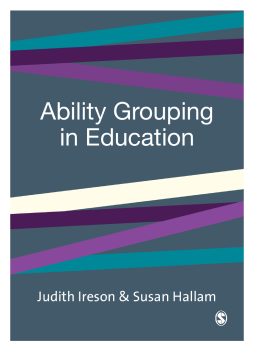
Additional Information
Book Details
Abstract
'With an anticipated audience of teachers and policymakers, this book is user-friendly, incorporating detailed research findings illustrated by graphs and tables. A summary is provided at the end of each chapter, offering an overview for the time-consciou
Table of Contents
| Section Title | Page | Action | Price |
|---|---|---|---|
| A note on currencies | |||
| Acronyms | |||
| Preface | |||
| 1. Water and Sanitation | |||
| Pumps and pipes: do they really improve the quality of life? | |||
| MARTIN BEYER | |||
| Not by pumps alone | |||
| SUMI KRISHNA | |||
| Rural sanitation and development | |||
| JOHN PICKFORD | |||
| Women as the key to success | |||
| MARYL. ELMENDORF and RAYMOND B. ISELY | |||
| Achieving success in community projects | |||
| CHARLES CHANDLER | |||
| 2. Health Aspects | |||
| Health aspects of water and sanitation | |||
| SANDY CAIRNCROSS | |||
| How carrying water affects women's health | |||
| ANNIE DUFAUT | |||
| Oral rehydration therapy: a cure but not a solution | |||
| DENISE AYRES | |||
| Water management and malaria control | |||
| GEORGE DAVIDSON | |||
| A lesson about water: schistosomiasis | |||
| KENNETH MOTT | |||
| 3. Safer Water in the Home | |||
| Water collection from thatched roofs | |||
| NICK HALL | |||
| Sanitation for rural housing in Sri Lanka | |||
| ANDREW COTTON and RICHARD FRANCEYS | |||
| The performance of aquaprivies in Thai refugee camps | |||
| ROBIN BIELLICK and PEGGY HENDERSON | |||
| Developing designs for toilets: the case of the Maldives | |||
| DEEPA NARAYAN-PARKER | |||
| 7. Other Sanitation | |||
| Waste stabilization pond design: some myths behind the science | |||
| JEREMY LUMBERS and BOB ANDOH | |||
| Urban sullage in developing countries | |||
| JOHN ASHWORTH | |||
| Why don't we use the night-soil to produce biogas? | |||
| PETER-JOHN MEYNELL | |||
| Rural health in northern Pakistan | |||
| JAMES MUIR | |||
| Better sanitation to beat mosquito breeding | |||
| from PRESS TRUST OF INDIA | |||
| Hygienic construction in remote African villages | |||
| BILL WOOD | |||
| 8. Training for Health | |||
| Training non-technical workers for rural water and sanitation projects | |||
| RAY ISELY and FRED ROSENSWEIG | |||
| Training village women as health promoters in Tanzania | |||
| KRISTIAN LAUBJERG | |||
| Sanitation training in Nepal | |||
| VANESSA TOBIN | |||
| A demonstration sanitation project in the Gambia | |||
| D. M. B. JAGNE | |||
| Helping women to help themselves | |||
| CHRISTINE VAN WIJK-SIJBESMA | |||
| 9. Community Education and Participation | |||
| Hygiene and literacy | |||
| ARNOLD PACEY | |||
| Pre-testing posters for communicating about water and sanitation | |||
| BOB LINNEY | |||
| Communications for low-cost sanitation in Zimbabwe | |||
| SUE LAVER | |||
| Hygiene and health education in primary schools in Lesotho | |||
| VIRGINIA DLANGAMANDLA | |||
| JO. Programme planning | |||
| Communication and health education planning for sanitation programmes | |||
| JOHN HUBLEY | |||
| Data collection for the design of water and sanitation projects in Belize | |||
| DAN CAMPBELL | |||
| Village-level sanitation programmes in Zimbabwe | |||
| PETER MORGAN | |||
| Planning self-sustaining programmes for sanitation: the Lesotho experience | |||
| PHIL EVANS | |||
| Low-cost sanitation in a squatter town - mobilizing people | |||
| SAMI MUSTAFA | |||
| 11. Strategies for Improvement | |||
| One step at a time: WHO's Minimum Evaluation Procedure for watersupply and sanitation projects | |||
| GUNNAR SCHULTZBERG, RICHARD FEACHAM and CAROL MACCORMACK | |||
| The latrine acquisition curve: a tool for sanitation evaluation | |||
| CHRIS SMITH | |||
| Reflections on a rural water-supply project in Zambia | |||
| JOANNE HARNMEIJER | |||
| The Kisumu Primary Health Care Project | |||
| MATHEW ONDURU | |||
| Water supply in primary health care: experiences of Amazon Indian communities | |||
| JAMIE BARTRAM and WARREN JOHNS | |||
| References and further reading |
